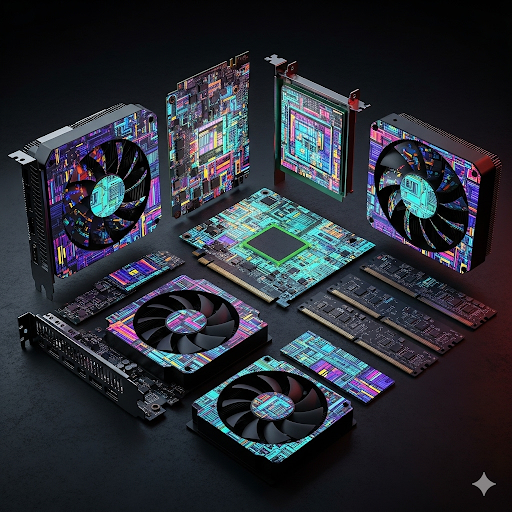Nsidia Executives Lambasted After Synthetic GPU Switcheroo

After a disappointing series of quarters following last years Series 200K GPU's, Nsidia's hardware benchmark promises are almost too good to be true. That's because they probably are. The upcoming series of graphics cards are currently due to ship December of next year, almost twelve months later than scheduled, allegedly due to a chip shortage spurred by recent tensions in the Taiwan Strait. This means that there aren't actually any physical units to show to the world.
But teardown images of the components are circulating on the web, and they're not the engineering samples handed out late last year. Instead Nsidia has used generative imagery to produce the very material it says its latest line of graphics cards are specialised for producing.
Spokespersons for the company claim the renderings are completely accurate to the real deal - but that's obviously at least somewhat untrue, as the exploded teardowns make use of synthetically generated artistic textures on the components.
Even optimistic enthusiasts made note that the photos, which are the first bit of material marketing the new line of cards, are no substitute for the real deal. Youtuber SlowMoLazers, whose youtube channel banner prominently features his Nsidia sponsored gaming rig, tweeted "Team Green always give their best, but its time to stop playin' ".
Nsidia Interim CEO Filip Kaminski claimed "we've invested a lot into this new round of chips, why not show our confidence by marketing it with tools its designed for". Nsidia claims all the internal component imagery was generated exclusively using software running on the new generation of cards, which has raised many questions about why these cards could not be photographed conventionally.
Regardless, many consumer hardware enthusasts are losing interest, the fact that no itemized benchmarks have been released for common software like Blender and Godot have left some of the most likely prospective customers for the cards feeling nervous and uncertain about investing in them.
While undoubtedly a treat on the eyes, for many, the fact that we are so close to the time of the initial intended launch without teardowns available raises a lot of red flags, especially for enthusiasts and organisations that were keen to replace the aging 190K series cards, top of the line four years ago but noticeably losing reliability owing to more sparse driver support in recent times.